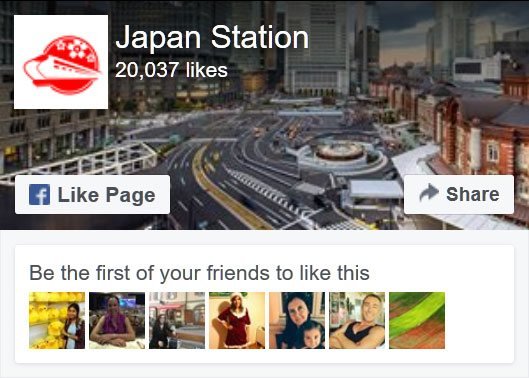Tokyo National Museum is a major museum in Ueno Park which conserves and exhibits Japan’s most significant collection of art and antiquities. These include paintings, calligraphy, sculptures, ceramics, lacquerware, Buddhist treasures, and archaeological artifacts both from Japan and other Asian countries.
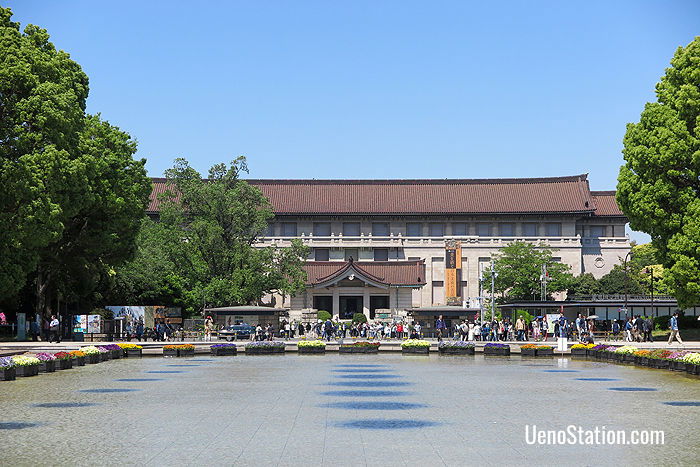
The stately buildings of Tokyo National Museum stand out in Ueno Park
As of April 2019, the museum’s collection includes over 117,000 items, of which 89 are registered National Treasures, and 644 are Important Cultural Properties. About 3,000 of these objects are on display in the regular exhibitions, and items are rotated often so that visitors can have a fresh experience each time they come to the museum.
Tokyo National Museum was first established in 1872 and is Japan’s oldest national museum and its largest art museum. The museum grounds are huge, with five main exhibition buildings, a garden, a research center, and several outdoor exhibits. You should set aside a few hours to get the most out of a visit to the Tokyo National Museum, but it will be very much worth your time. Here is a brief guide to the museum’s buildings and facilities.
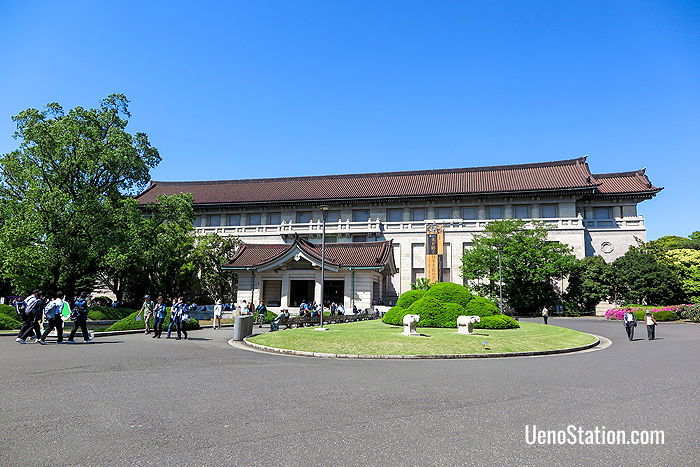
The Honkan
The Honkan
The Honkan is the main building of the museum and houses the Japanese art collection. The Honkan building was designed by the architect Watanabe Jin and opened in 1938. It combines a neo-classical base with Japanese-style gabled roofs in a distinctive style called “Imperial Crown” and it is a nationally registered Important Cultural Property.
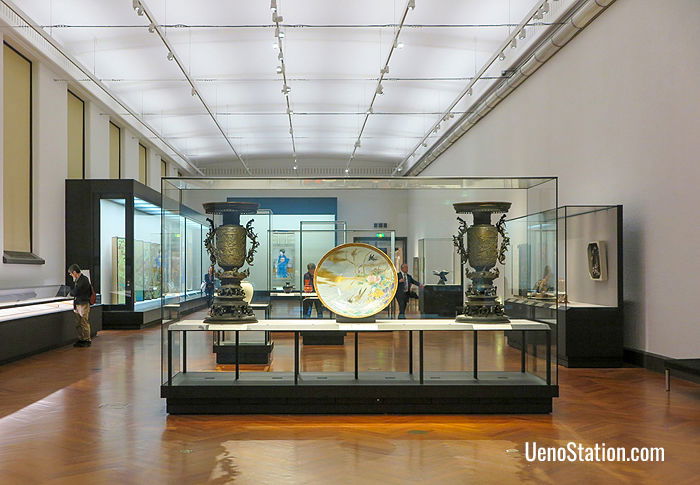
A gallery in the Honkan
There are 24 exhibition rooms on the Honkan’s two floors. On the first floor the galleries are organized by genres such as sculpture, lacquerware, metalwork, and swords and there are also galleries of modern art and art representative of Ainu and Okinawan culture. The second floor is organized chronologically and shows the history of Japanese art from the prehistoric Jomon period until the Edo era.

The Heiseikan
The Heiseikan
The Heiseikan was built to commemorate the marriage of Crown Prince Naruhito (who is now the Emperor) and it opened in 1999. This building houses the museum’s archaeological collection on the 1st floor and also hosts special exhibitions on the 2nd floor.
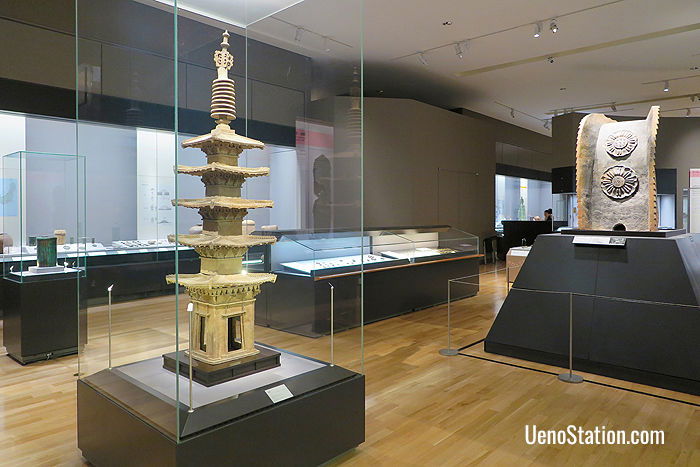
Ancient exhibits in the Heiseikan
The Heiseikan is located behind the Honkan but the two buildings are directly connected by a passageway that runs between them on the 1st floor.
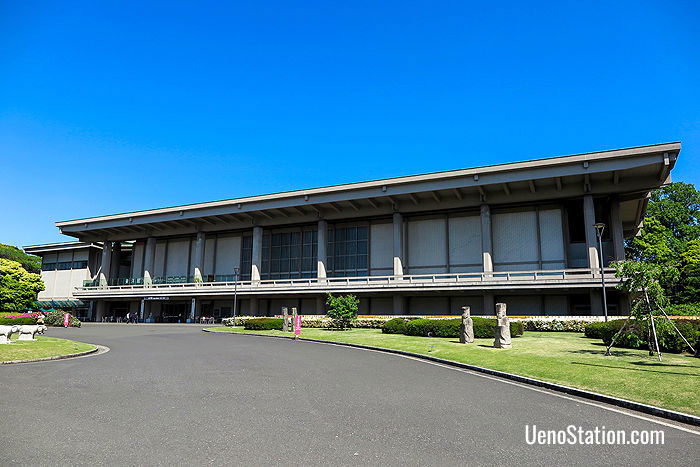
The Toyokan
The Toyokan
The Toyokan stands to the right of the Honkan and houses the museum’s collection of Asian art and artifacts. This building was designed by the architect Taniguchi Yoshiro, and first opened in 1968. Inside are art and antiquities from China, Korea, Southeast Asia, Central Asia, India, and Egypt.
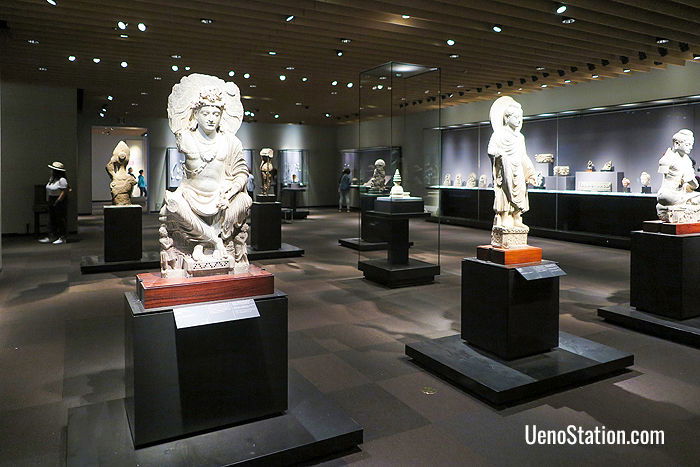
Asian art in the Toyokan
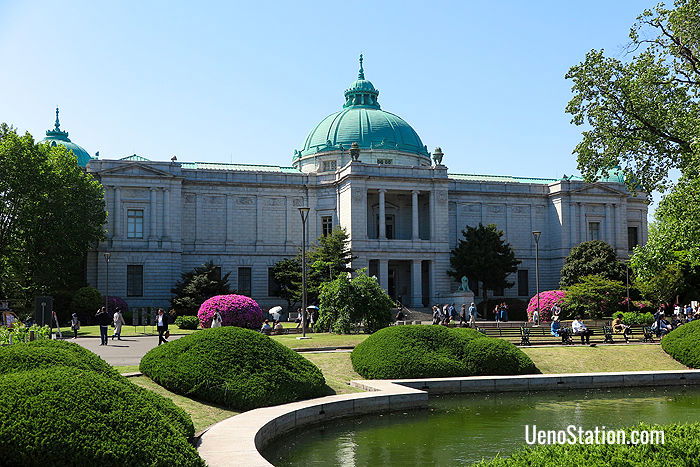
The Hyokeikan
The Hyokeikan
The Hyokeikan stands to the left of the Honkan and is only used for special exhibitions. This Meiji era building was built to commemorate the wedding of the Crown Prince who later became Emperor Taisho and it was opened in 1909. It is a registered Important Cultural Property. When there are no special exhibitions the Hyokeikan remains closed.
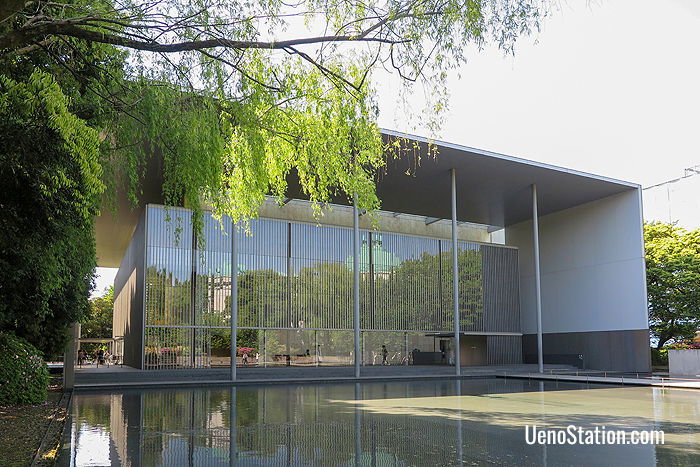
The Gallery of Hyoryuji Treasures
The Gallery of Horyuji Treasures
This building was designed by the architect Taniguchi Yoshio and opened in 1999. It is used to exhibit over 300 objects from Horyuji Temple in Nara, most of which date from the 7th and 8th centuries.
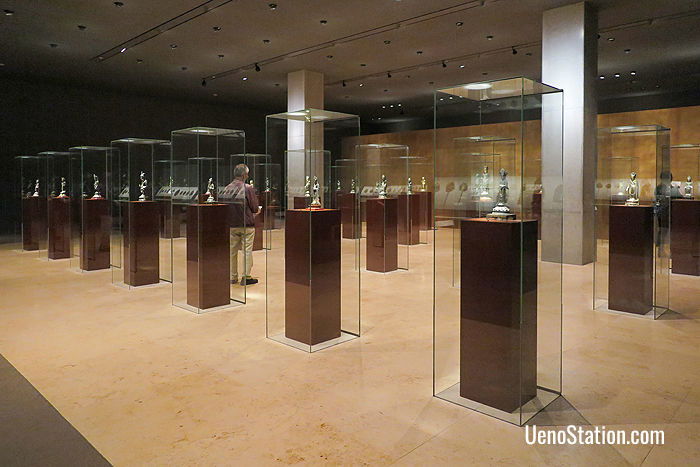
A display of Buddhist statuary from Horyuji
The Museum Garden
There is a large traditional stroll garden behind the Honkan which includes a pond, and five historic teahouses.
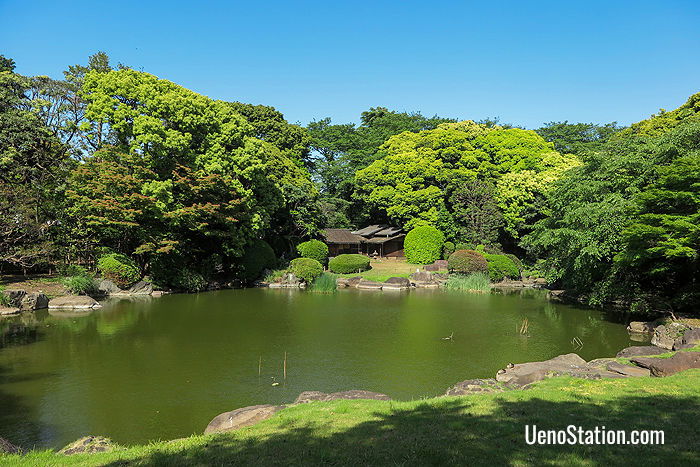
The museum garden viewed from the Honkan
Also in the garden is a bronze pagoda about 570 cm tall which was originally donated to Horyuji Temple by the shogun Tokugawa in the year 1688.
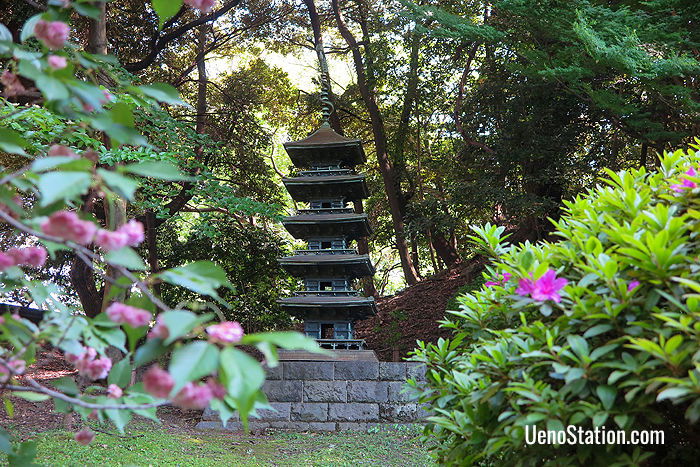
The bronze pagoda
Outdoor Exhibits
In addition to the bronze pagoda there are number of outdoor exhibits scattered about the museum grounds. Probably the most impressive is the Kuromon (or “Black Gate”) which was originally the front gate of the powerful Ikeda clan’s residence. This gate dates from the early 19th century and was transferred here in 1954. The Kuromon is opened on weekends and national holidays between 10.00 and 16.00.
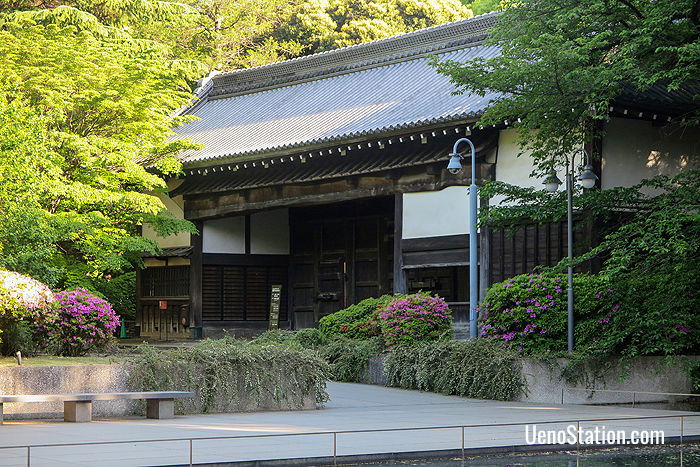
The Kuromon
Close by the museum’s main gate is a memorial statue of the British physician Edward Jenner (1749-1823). It was created by Yonehara Unkai in 1896 to commemorate 100 years since Jenner’s discovery of vaccination against smallpox.
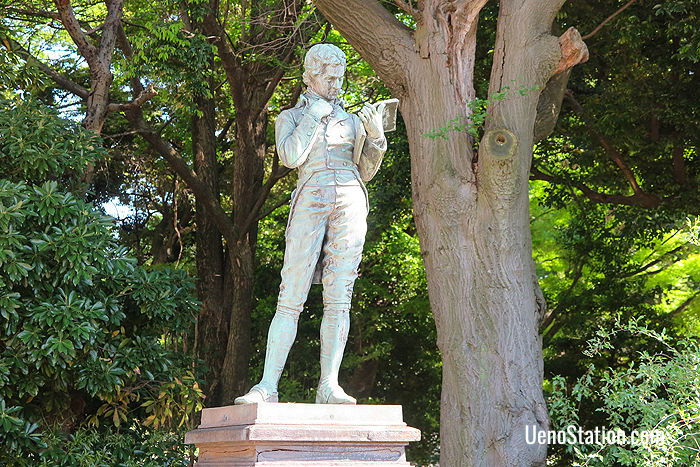
The statue of Edward Jenner
The entrance to the Toyokan is flanked by Qing dynasty Chinese stone lions which date back to the 18th or 19th century.
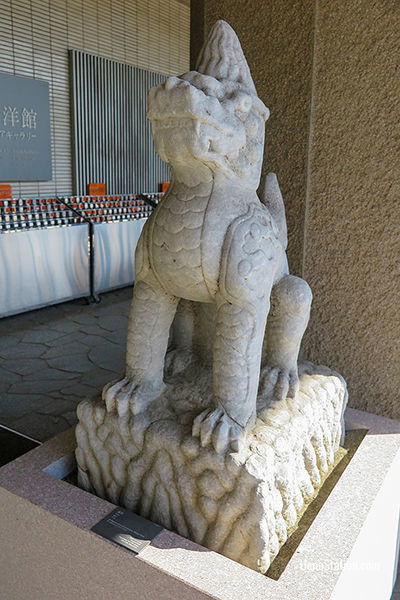
One of the Chinese stone lions
Close by the Kuromon is an Edo era “Demon Tile” which originally belonged to the roof of the Kuroda clan residence in Kasumigaseki. It is notable for its complicated pattern of clouds.
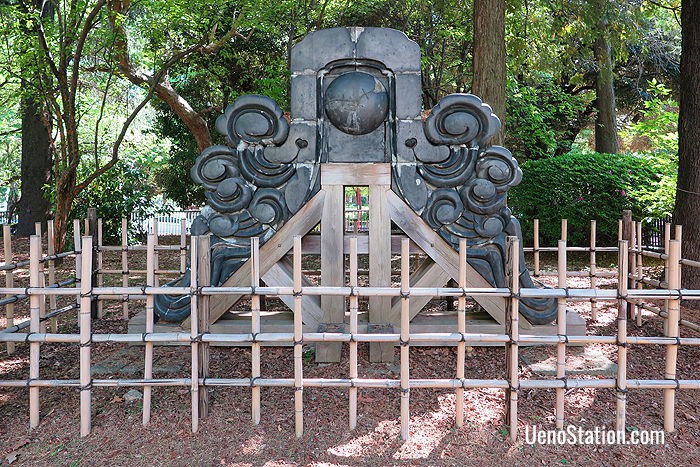
The Demon Tile
The Azekura Repository is located between the Gallery of Horyuji Treasures and the Research and Information Center. Originally, this Kamakura era repository was used to hold Buddhist sutras at Jurinin Temple in Nara, but was relocated here in 1882. It was designated as an Important Cultural Property in 1953.
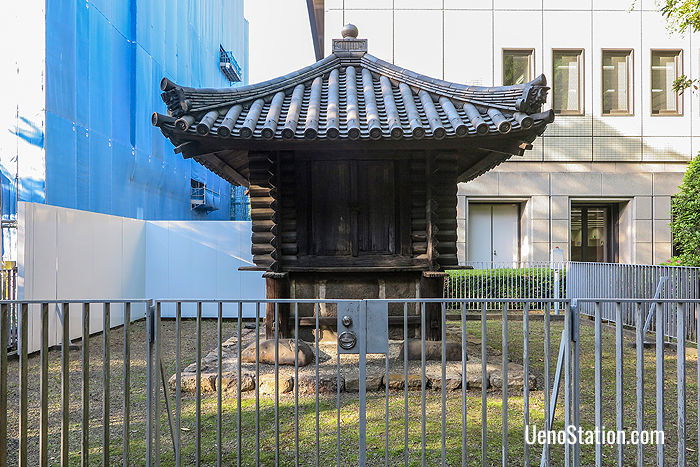
The Azekura Repository
There are a number of 18th and 19th century stone statues from Korea on the grounds in front of the Toyokan.
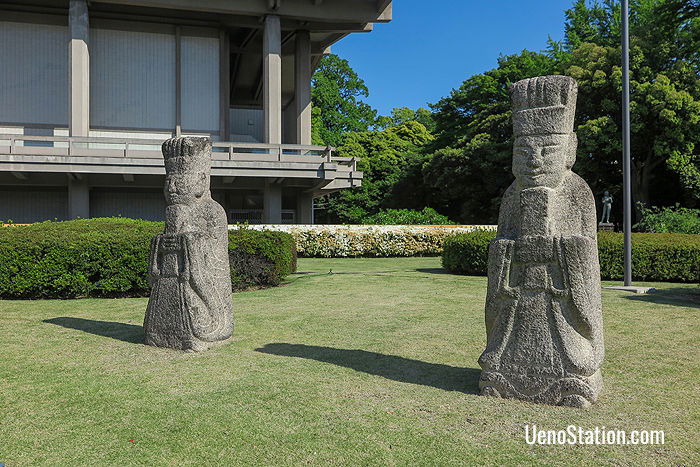
Officials, from Gangwondo, Korea
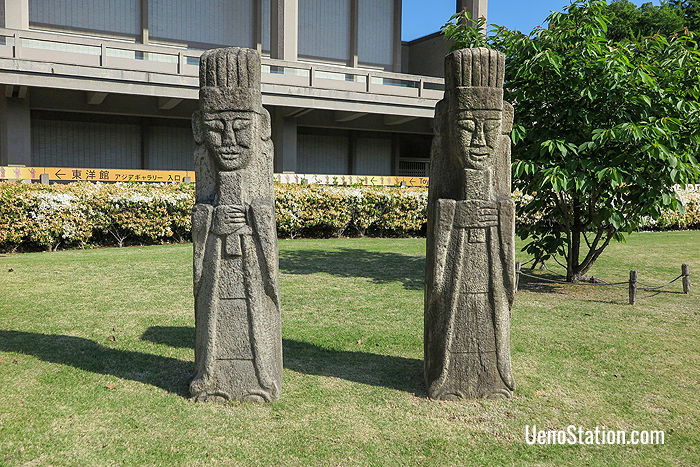
Officials, from Pyongyang, Korea
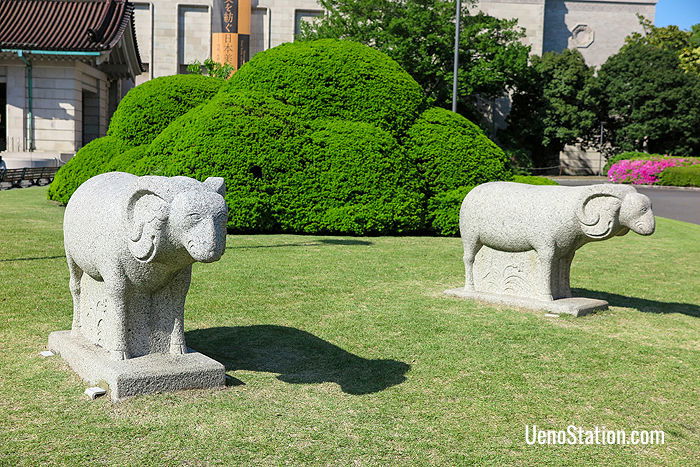
Sheep, from Gangwondo, Korea
The Research & Information Center
The Research and Information Center is an extensive library of books, magazines, and photographs which are freely available to view without appointment. Reference and photocopying services are also available at the center’s counter. Visitors can access the center from within the museum grounds, or access it via the West Gate where entry is free of charge. The center is open from Monday to Friday and from 9.30 to 17.00. It is closed on weekends, on national holidays, on the last day of the month, and during the year-end holidays.
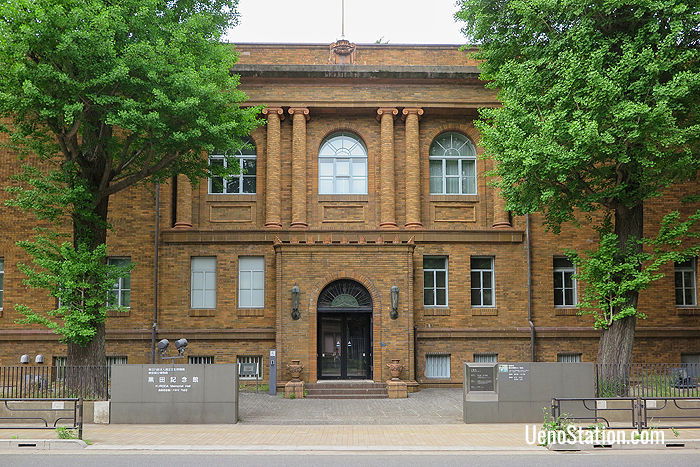
Kuroda Memorial Hall
The Kuroda Memorial Hall
The Kuroda Memorial Hall is a sixth exhibition building which is located off the main grounds of the museum. This building houses a collection of art by the Western-style painter Kuroda Seiki. It is located outside the west side of Ueno Park and is free to enter, so you do not need a ticket from the main museum premises to visit it.
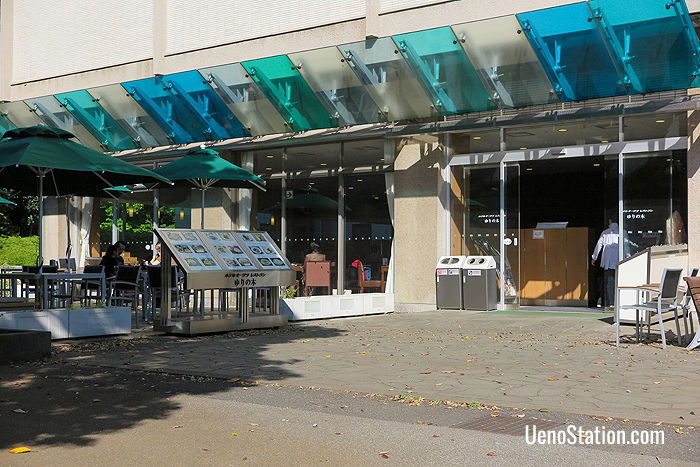
Hotel Okura Yurinoki restaurant
Restaurants & Shops
There are two restaurants on the museum grounds. The Hotel Okura Yurinoki is located on the ground floor of the Toyokan and The Hotel Okura Garden Terrace is located on the ground floor of The Gallery of Horyuji Treasures. Yurinoki has a wide-ranging menu which includes Japanese, Western, and Chinese style dishes. Garden Terrace serves light meals, sandwiches, and cakes. There are also drinks vending machines in the 1st floor lounge of the Heiseikan. Visitors are welcome to bring their own food and drink to this lounge or to have a picnic on the outdoor benches in the museum grounds.
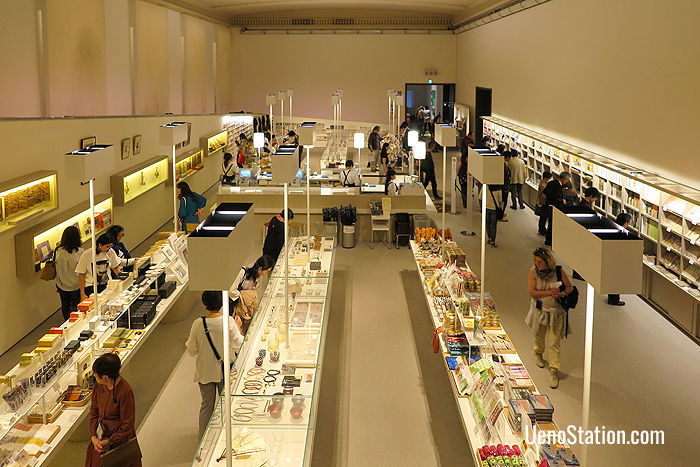
The Honkan souvenir shop
Souvenir shops can be found on the 1st floor of the Honkan, on the 1st floor of the Toyokan, and at the Main Gate Plaza. The biggest shop is located in the Honkan. Items on sale include t-shirts, bags, stationery, prints, postcards, and traditional crafts. There is also a small section of English language art books in the Honkan shop.
Services
The museum supplies brochures which include a map and a guide to the grounds in seven languages: English, Chinese, Korean, French, German, Spanish and Japanese. Information on the exhibits is written in English and Japanese, with some information also given in Korean and Chinese.
There are coin lockers on the 1st floor of the Honkan, Toyokan, Heiseikan, Gallery of Horyuji Treasures, Research & Information Center, and Kuroda Memorial Hall.
Free Wi-Fi internet access is available in most areas of the museum grounds.
Galleries at the museum are barrier-free for wheelchair users, with slopes, elevators, and accessible restrooms. The only exception is the 2nd floor of the Hyokeikan, which is not currently accessible for wheelchair users. Wheelchairs are available to borrow, and there are parking spaces for visitors with disabilities. These parking spaces are limited in number so advanced reservations are recommended.
Location
Tokyo National Museum is located inside Ueno Park. It is a 6 minute walk from the Park Exit of JR Ueno Station, a 10 minute walk from Keisei Ueno Station, and 10 minutes from Ueno Subway Station on the Tokyo Metro Hibiya and Ginza lines.
Opening Hours:
Tuesday to Sunday: 9.30 – 17.00 (Last entry: 16.30)
Friday & Saturday: 9.30 – 21.00 (Last entry: 20.30)
Closed: Mondays & year-end holidays (December 26th – January 1st)
(open if Monday falls on a national holiday, and then closed the following Tuesday instead)
Admission Fees:
Adults: 620 yen
University Students: 410 yen
Children (under 18) & Seniors (over 70): Free
Article and original photos by Michael Lambe. All rights reserved.
